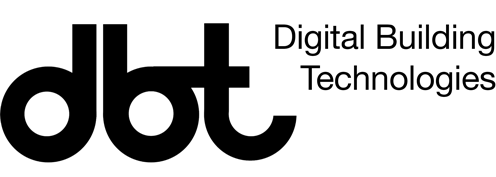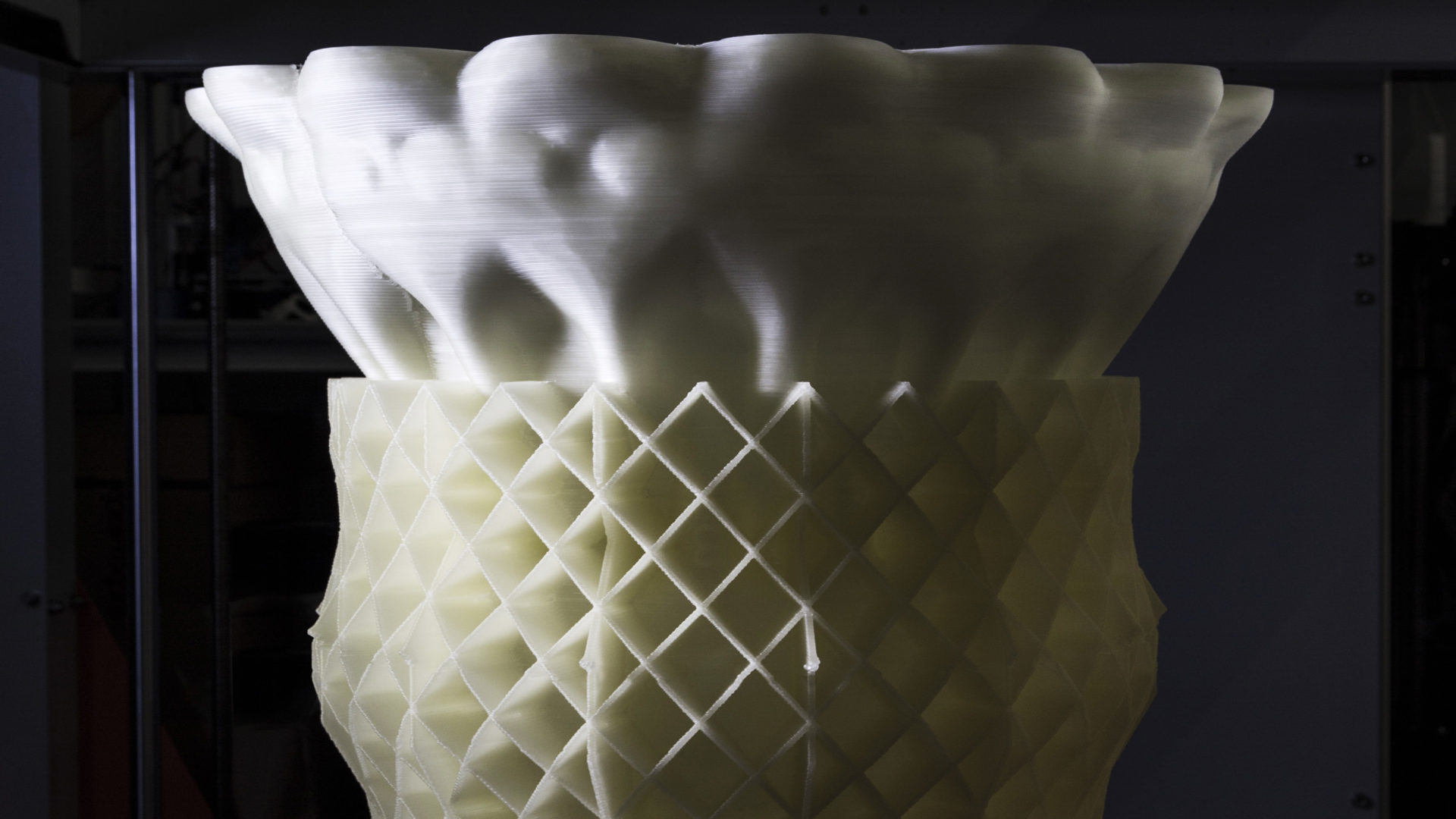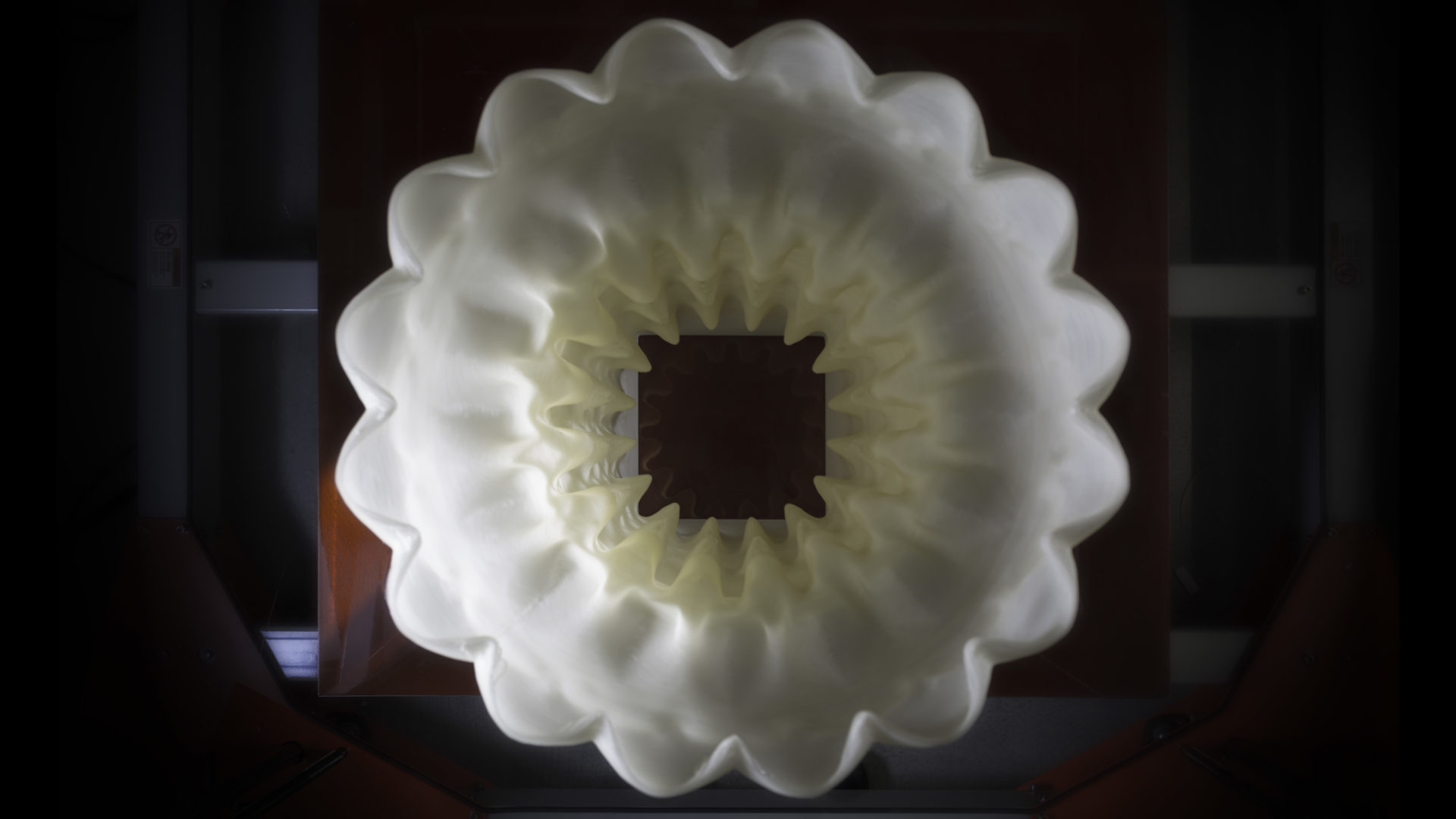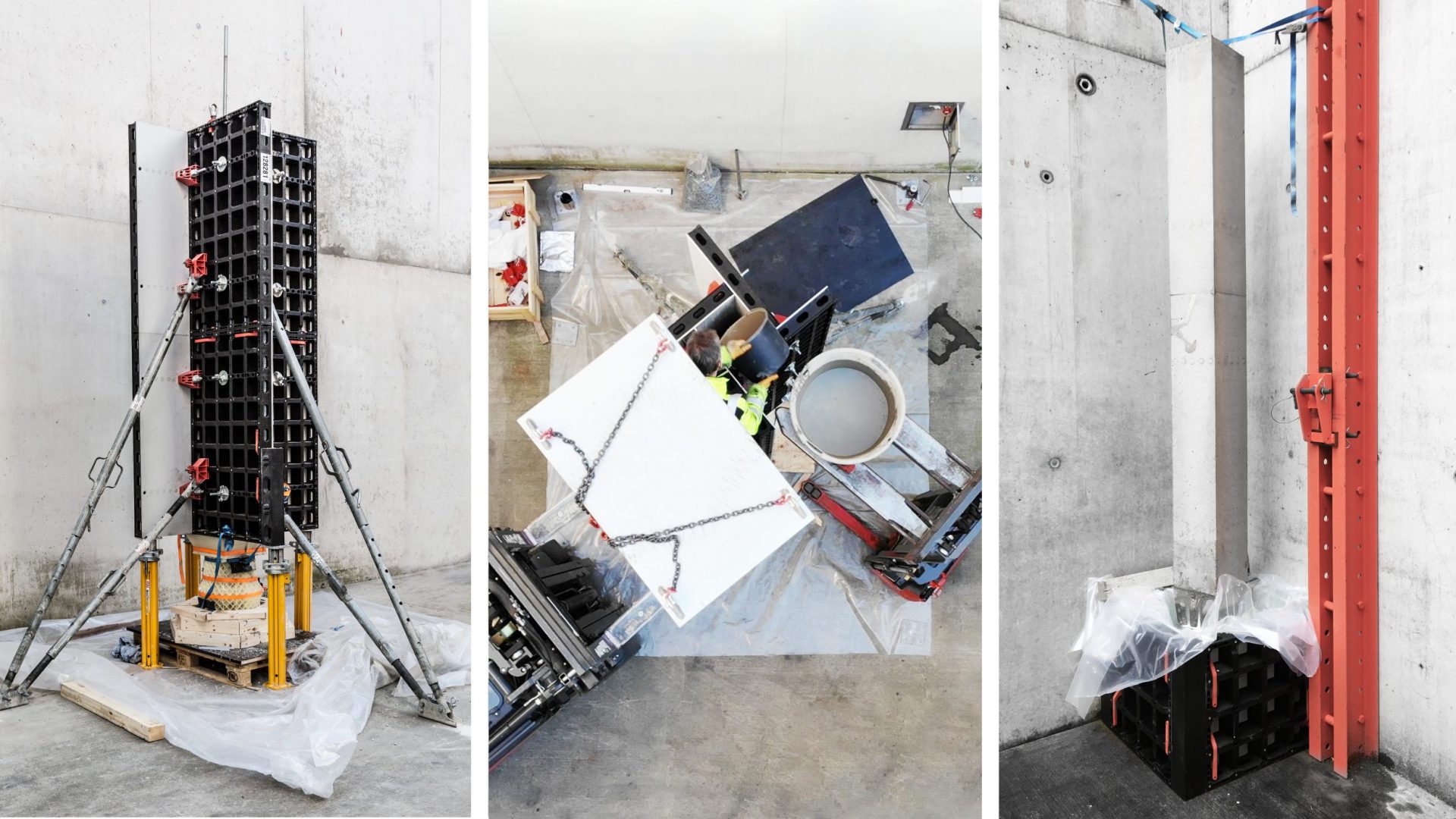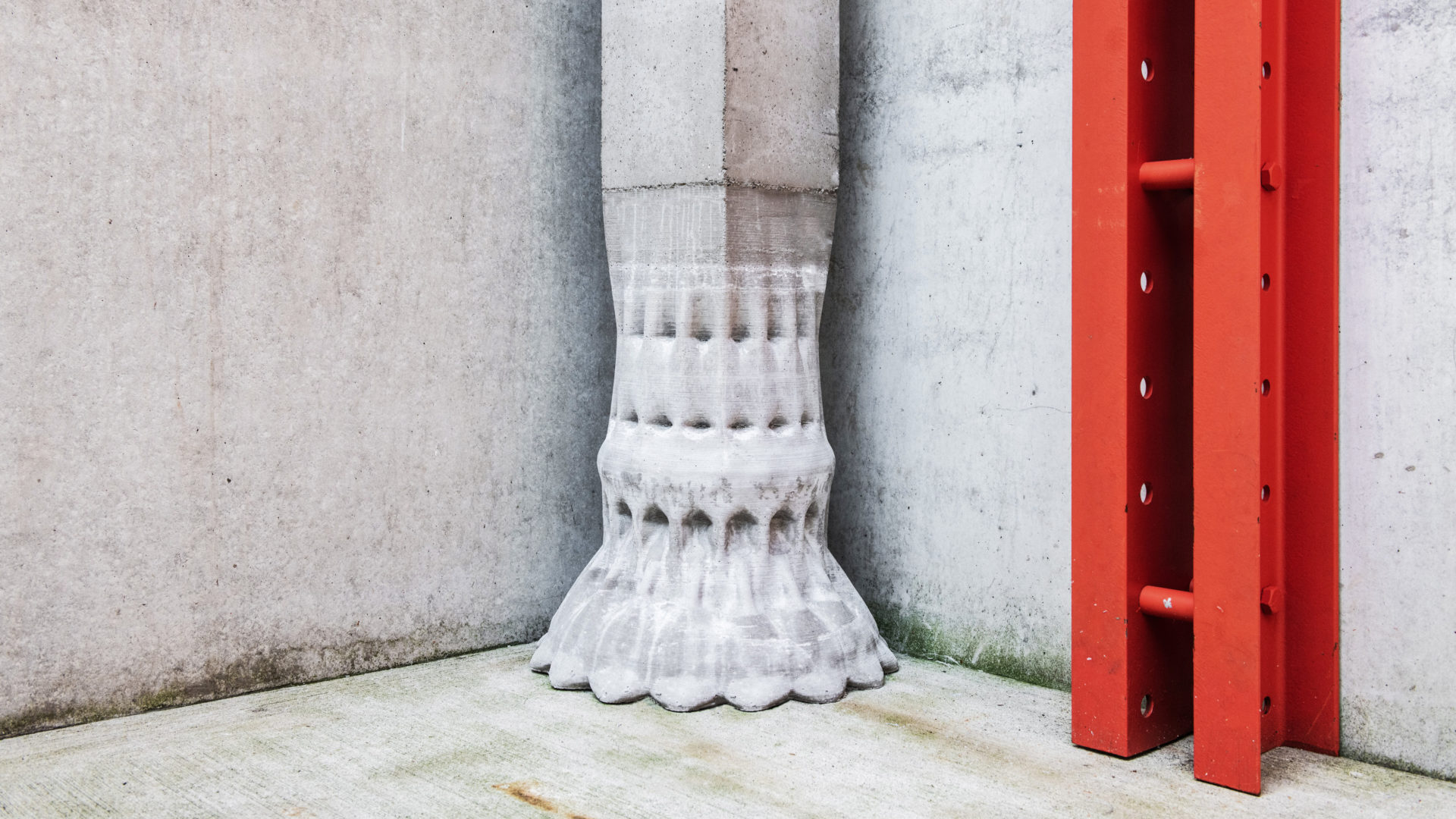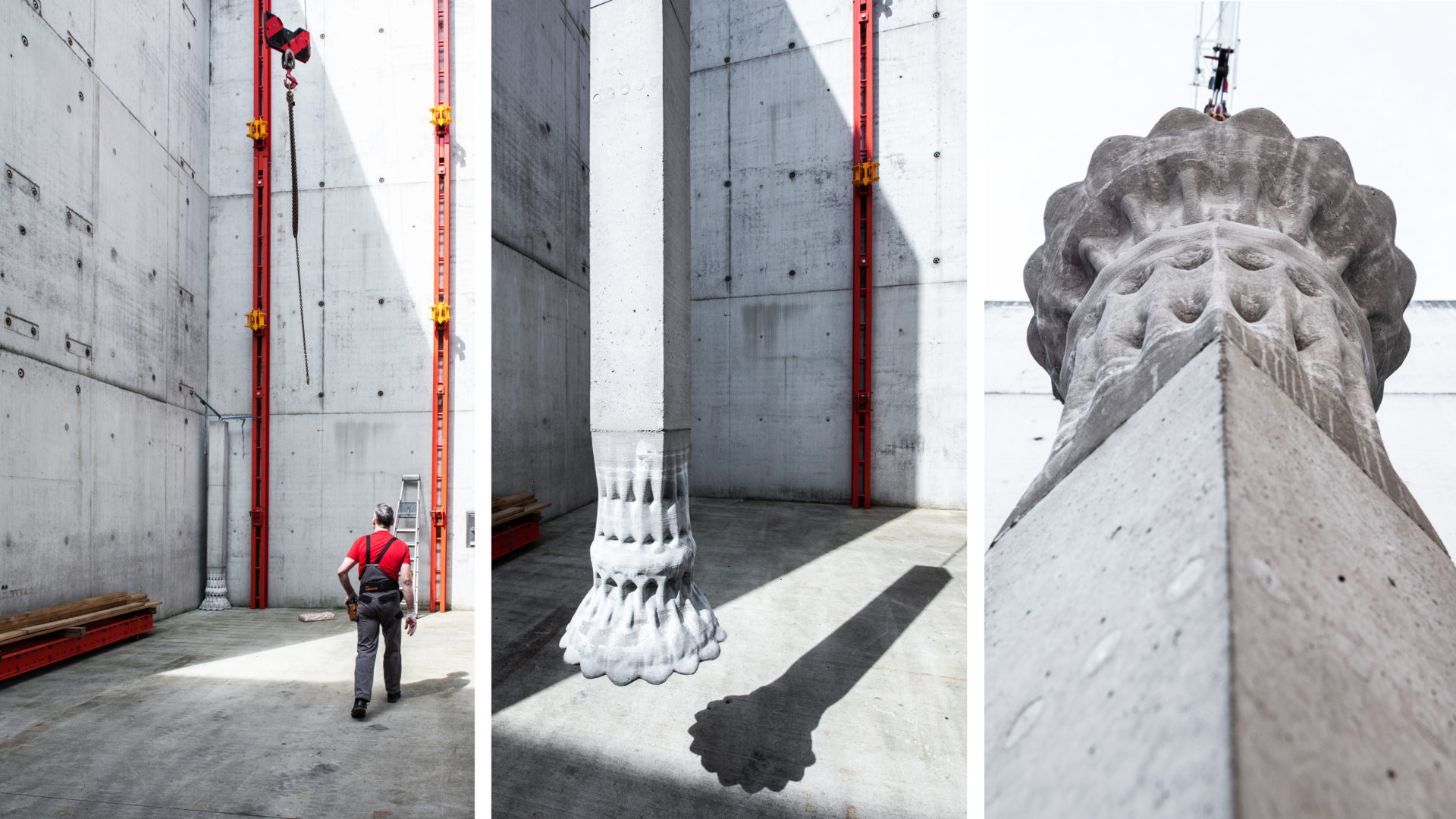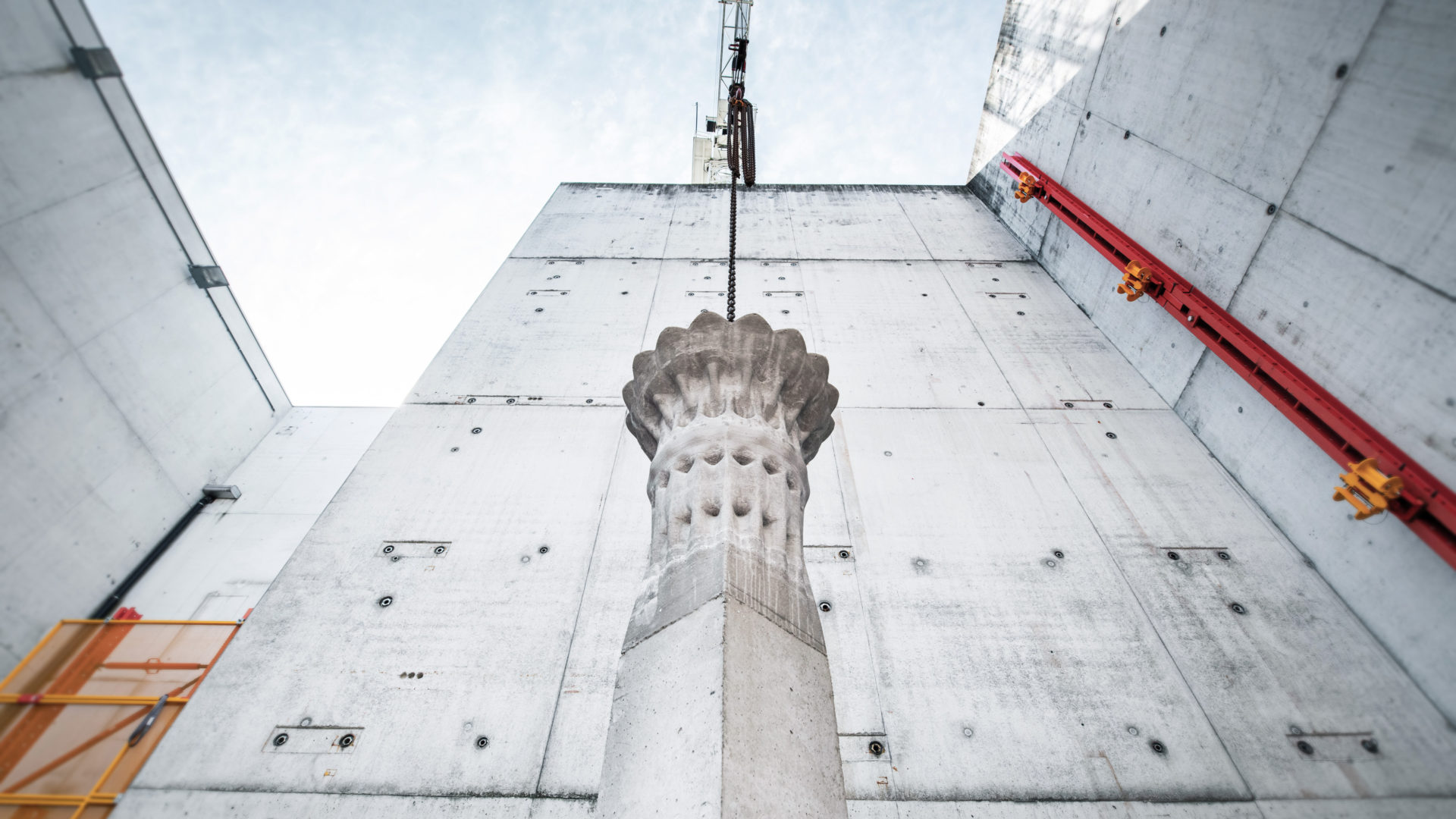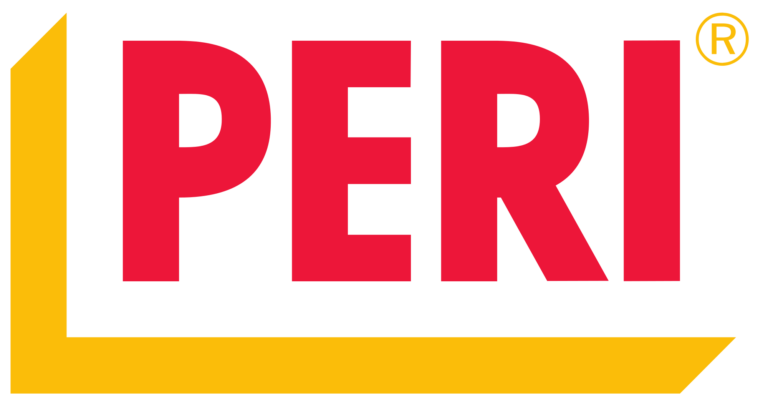Additive Archetypes is a series of prototypes based on the research Dissolvable Formwork. They are the first large-scale concrete prototypes cast inside water dissolvable 3D printed formwork (3DP).
This demonstrator showcases how low-impact FDM 3D printed formwork can be used in architecture, by showcasing its use for producing load-bearing ornamented or integrative columns.
CONTEXT
With the advent of Additive Manufacturing technologies, 3D printed formwork strategies have been developed for the production of complex concrete components. 3D printed formwork, created with Fused Deposition Modelling (FDM), shows great benefits such as creating lightweight formwork, providing design freedom and offering a high level of integration.
However, it does not come without limitations. The removal of 3DP formwork is still a challenging task, as formwork needs to be physically broken, heated up or removed with heavy tools. While removing, there is the risk that the cast piece is damaged because of excessive force or heat, while features like undercuts or inner cavities are rather challenging to achieve.

WATER DISSOLVABLE FORMWORK
Water dissolvable formwork has the advantage of facilitating undercuts and inner cavities. The process is similar to conventional concrete casting, however, the 3D printed formwork, designed to withstand the hydrostatic pressure, can be washed away with nothing but water. This advantage opens up unseen design possibilities and empowers architects and designers to create highly performative and integrative parts.
Another significant advantage of dissolvable formwork is that the chosen printing material is entirely biodegradable. If not degraded, the material can be recycled and reused for the production of more elements.
THE COLUMN
The prototype shown here focuses on how FDM 3DP formwork can be successfully applied to the fabrication of large scale components, while simultaneously minimizing the printing time. The investigated method encompasses studies on the formwork itself and its geometry to withstand hydrostatic pressure while casting a 3m high component. Material studies were also carried out to ensure quality casting both in surface finish and layer bond to prevent breakage.
For this prototype water dissolvable 3D-printed formwork was combined with a standard formwork system, creating a column with a square shaft and a bespoke capital.
Only 8kg of formwork were supporting 250kg of standard formwork and withstood the pressure of 220L of concrete, at a maximum height of 3m.
The capital of the column was designed using a custom line subdivision script to form a smooth transition between the base geometry of the standard formwork to the ornamented capital, while it incorporates a standard rebar cage making it a load-bearing architectural component. The combination of standard formwork and 3D printed add-on features create an efficient and reliable formwork system. Complexity is only added where needed while keeping printing time, material usages and waste, as little a possible.

